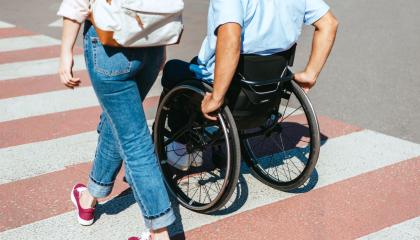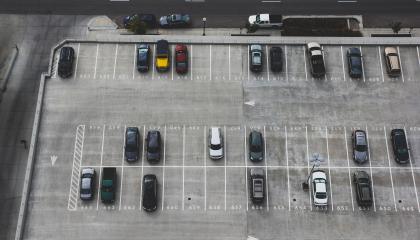At StrongGo, we aim to enhance urban accessibility with high-performance tactile warning surface indicators (TWSIs
First and foremost, detectable warning tiles and surfaces were designed to assist individuals with disabilities to safely navigate public spaces, and then, in 1991, the Americans with Disabilities Act (ADA) mandated the use of detectable warning tiles in public areas throughout the United States.
The development of larger cities grew exponentially in the past fifty years, leaving us with rapidly built cities that have given too little thought to the disabled members of their population. Now is the time to reassess how to be more inclusive in the built environment so that people of all abilities and diversity experience a living environment that meets their needs.
One result of population growth within cities is something called urban expansion, which is the unrestricted growth of housing, businesses, and roads without any specific planning. Urban expansion influences cities’ social and environmental dynamics, causing a number of disadvantages, including longer commutes, higher transportation costs, pollution, and loss of countryside.
Tactile paving, now known as detectable warning dome tiles, was first developed by Seiichi Miyake in 1965 to help people with vision impairments navigate public spaces. Major cities and transportation networks throughout the world use detectable warning dome tiles.
Over the last few years, more and more urban designers and architects are incorporating radius shapes as part of their exterior designs. These new shapes bring modern life to an intersection rather than the classic rectangular ramp pattern we are all accustomed to. These specific radius tiles are made-to-order and manufactured with the same nano-engineered polymer concrete material as the standard TekWay ADA Dome Tiles to ensure long lasting durability and functionality.
To make the world more accessible, the ADA established a certain list of reasonable accommodation that businesses, organizations, and companies can do to better serve individuals with disabilities. Reasonable accommodation opens the world to everyone.
Legally, a reasonable accommodation refers to an adaptation to a job, such as day-to-day job tasks or modified work environment, that allows a qualified individual with a disability to work. An accommodation is considered “reasonable” if it doesn’t cause an unreasonable amount of work or money to make happen.
Pedestrian fatalities have been on the rise since 2008, in fact, between 2007 and 2017, pedestrian fatalities increased by 35%, and more than a third of those fatalities occurred on local streets—not highways or state roads. And 2018 was projected to have the most deaths since 1990.
This fact is sobering, and it doesn’t have to be that way.
For the urban landscape, sidewalks have become a type of no man’s land for city commuters — not only for pedestrians but also for cyclists. Since vehicles rule the road, pedestrians and cyclists are at-risk anytime they walk or ride in the road. To remain safe, city cyclists and pedestrians often turn to the sidewalk.
While many cities want their residents and commuters to move away from using cars and encourage bicycling, pedestrians in some cases see this shift as dangerous.
For the urban setting, bike lanes can offer many benefits to the community. More and more cities are seeking ways to cut down on congestion while also improving the environment, and these cities are turning to the bicycle. However, the addition of e-bikes and shared bicycles is creating its own number of problems.
Pagination
- Page 1
- Next page
Connect with us
We pride ourselves on our customer service, and we'd love to hear from you! Sign up for our newsletter to keep up with industry updates and trends, as well as any new product releases.












